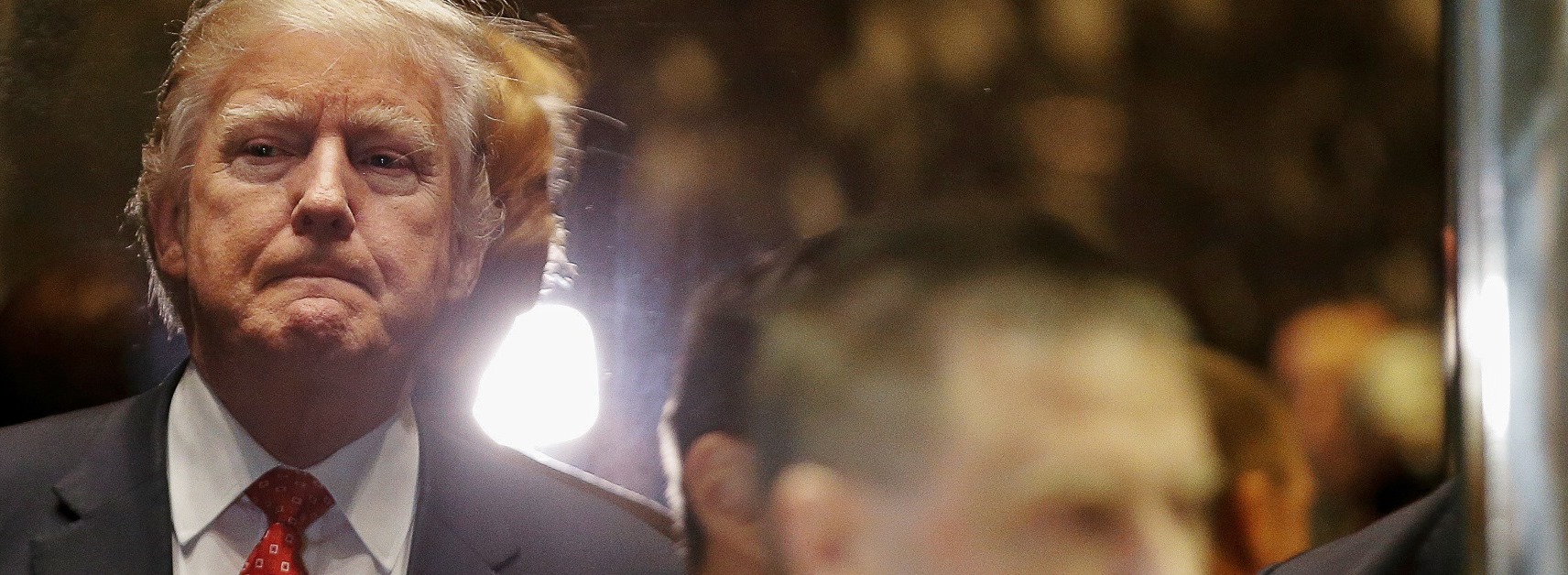American presidency: Trump’s treaty undoing project
Michael D Goldhaber

A few hours after last year’s Brussels terror attacks, Donald Trump was asked what he had to say about international law. ‘I would say,’ he responded,’ that the eggheads who came up with this international law should turn on their television and watch CNN.’
Almost lost in the regressive headlines of late January was a draft executive order in which the new US President contemplates a review of all multilateral treaties unrelated to security, extradition or trade. Rumour has it that he doesn’t love trade treaties either.
Ratifying a treaty under US law is notoriously hard. Would it really be so easy for one president to throw 240 years of agreements out the window? Quite possibly yes.
There are three types of international agreements under US law. A ‘treaty’ is ratified by two-thirds of the Senate. A ‘congressional executive agreement’ needs only a majority of both houses of Congress. The president can make a ‘sole executive agreement’ himself.
IBA podcast on President Trump and the implications for human rights issues
At the drop of a hat, Trump can shred a sole executive agreement, or a mere ‘political commitment.’ But can he tear up a treaty or congressional executive agreement at will? As with many other norms that have rarely before been tested, the legal answer’s unclear.
The US Supreme Court found this question non-justiciable in Goldwater v. Carter (1979), when Jimmy Carter unilaterally withdrew the US from its Taiwan defence treaty. But if Congress opposed the President’s move, the question would be fair game.
Suppose that Trump withdraws the US from the North Atlantic Treaty. Then suppose that Congress contests Trump’s power to do so himself, and votes to stay in NATO, removing any question of justiciability. In such a case – let’s call it Schumer v. Trump – how would the Court resolve the clash between the two political branches? The precedent of Bush v. Gore might suggest a vote along straight party lines. But the Republican party would be deeply divided. Who knows? The case might even be called McCain v. Trump. If the new President were to make a move as radical as withdrawing from NATO, it seems likely the Court would rein in executive power, and wisely so. A more formalist commentator, who has studied all nine justices’ thinking on the separation of powers, might beg to differ.
While Trump has said heretical things about NATO, he’s never threatened to withdraw, and the same goes for the WTO. Three key agreements that he has at times threatened to kill are NAFTA, the Paris climate agreement, and the Iran nuclear deal.
Technically, the Iran nuclear deal is only a political commitment, so Trump surely has the power to reinstate US sanctions. But Catherine Amirfar, who recently returned to Debevoise & Plimpton from the Obama State Department, argues that such a move by the US might not unravel the deal, as the EU would maintain leverage over Iran.
‘‘Three key agreements that Trump has at times threatened to kill are NAFTA, the Paris climate agreement, and the Iran nuclear deal
The Paris climate pact is a sole executive agreement under US law. Trump could pull out on his own—but the soonest he could do so, by its own terms, is Nov. 2020. A faster option would be to pull out of the UN Framework Convention on Climate Control, which underpins it. But that’s a treaty, so an executive pull-out would set up a Schumer v. Trump challenge. If worse comes to worst, Amirfar is optimistic that the world’s other major polluters, and most US states, would remain committed to the Paris climate goals.
NAFTA is a treaty. So for Trump to withdraw over Congress’s objection would set up another Schumer v. Trump scenario, with the added wrinkle that NAFTA is implemented by a domestic statute. That Congress would object in the current climate is no certainty.
Most of the countless treaties Trump might review are more mundane, but no less vital. John Bellinger of Arnold & Porter Kaye Scholer, who was State Department legal adviser in George W. Bush’s second term, has made this point eloquently. Without such treaties, he suggests, ‘Americans could not have our letters delivered in foreign countries; could not fly over foreign countries or drive on foreign roads using our state driver’s licenses; could not have access to a foreign consular official if we are arrested abroad; could not have our children returned if abducted by a parent; and could not prevent foreign ships from polluting our waters.’
A more measured approach may yet prevail on existing treaties. But don’t hold your breath on the Senate ratifying any of the 44 already pending. By Bellinger’s count, the number of treaties ratified over eight years has declined from 163 under George W. Bush to 22 under Obama. Some Senate Republicans have convinced themselves that the UN conventions on the rights of children and the disabled are somehow a threat to Christian home-schooling. Activists used to shame the US for being the only nation not to ratify the Convention on the Rights of the Child except Somalia and South Sudan. Yet even the failing states got their act together in 2015 — making Uncle Sam the world’s sole dissenter.
Professor Oona Hathaway of Yale Law School has predicted the death of treaties. But by ‘Treaty’s End,’ she had in mind a salutary shift to congressional executive agreements. We now face the possibility of an administration that espouses virtually no international agreements of any kind.
Then again, people can surprise. Nothing would say ‘Nixon in China’ like Trump endorsing the Convention to Eliminate All Forms of Discrimination Against Women.
Michael D Goldhaber is a freelance writer based in New York and was Senior International Correspondent at American Lawyer magazine for 12 years. He can be contacted at michael.goldhaber@gmail.com
